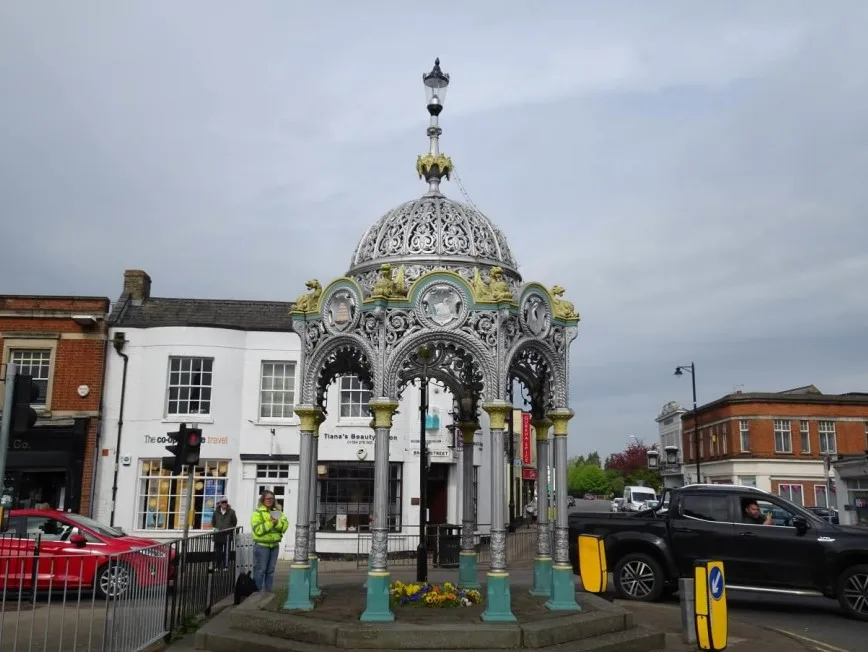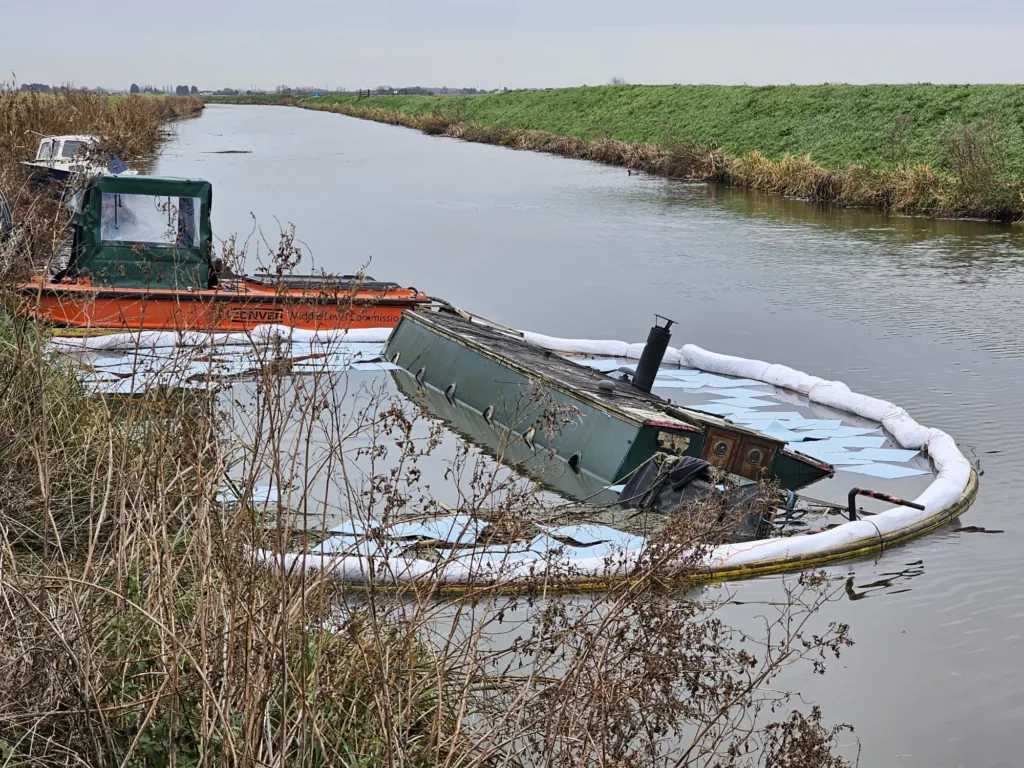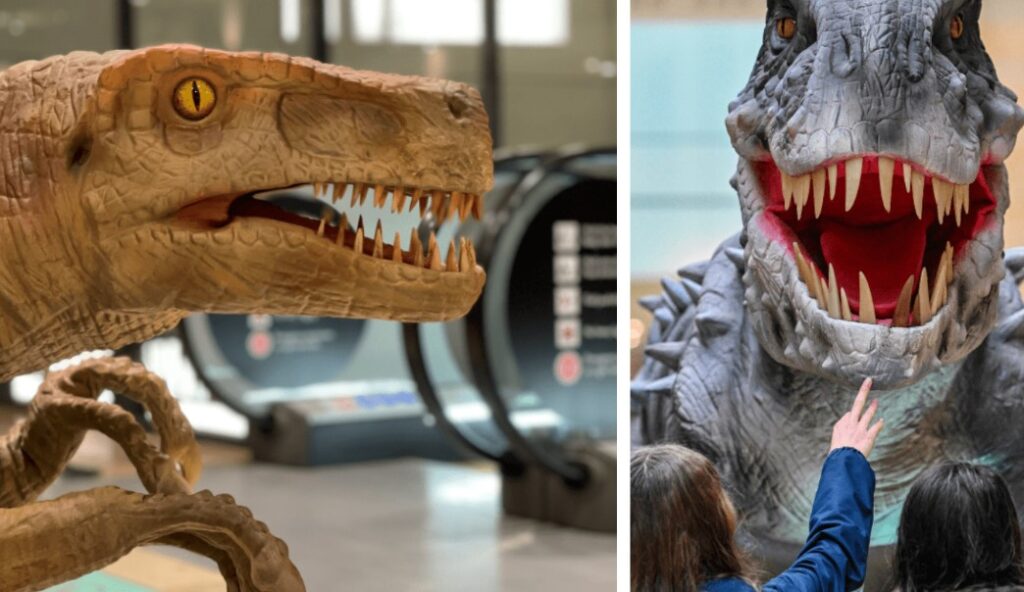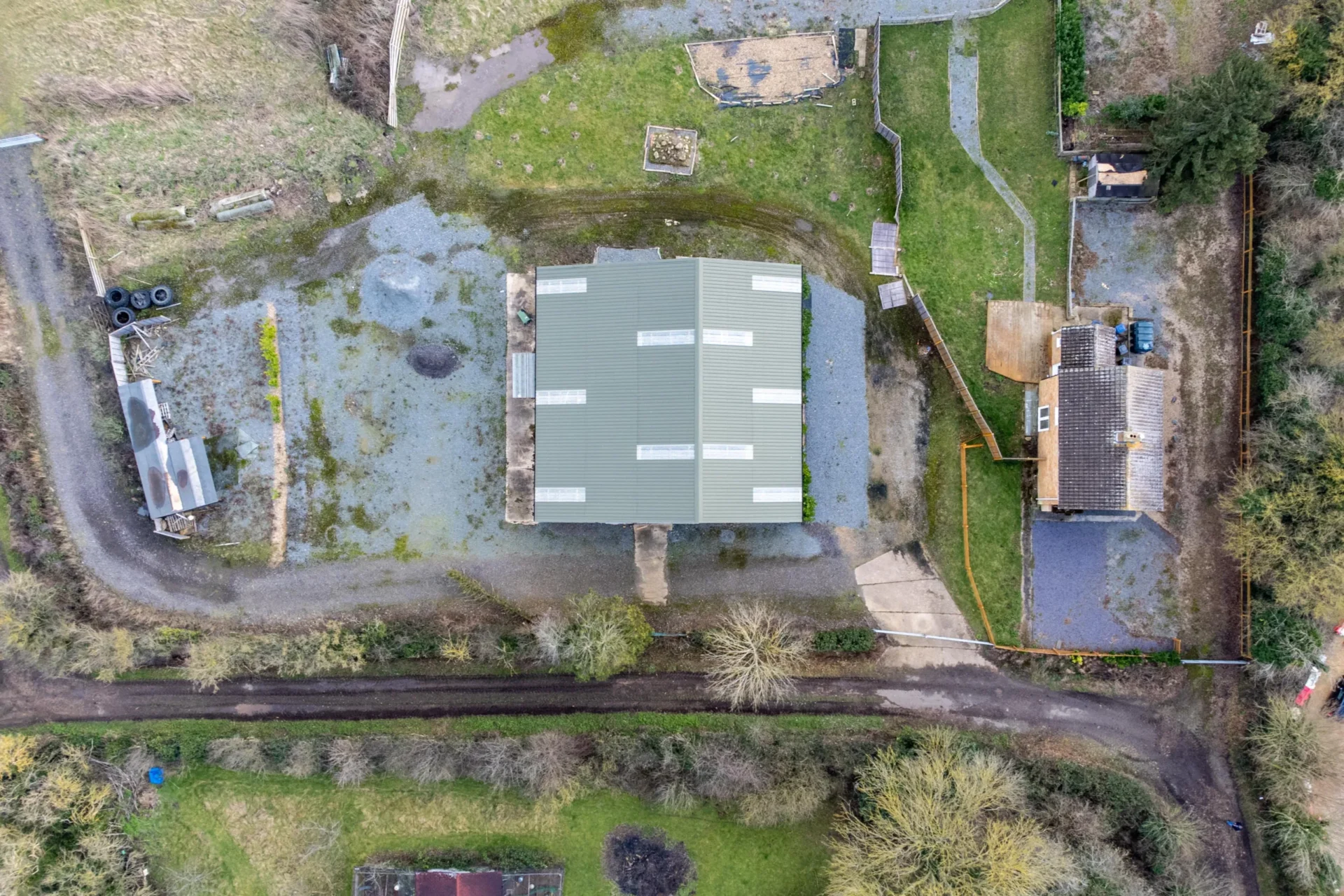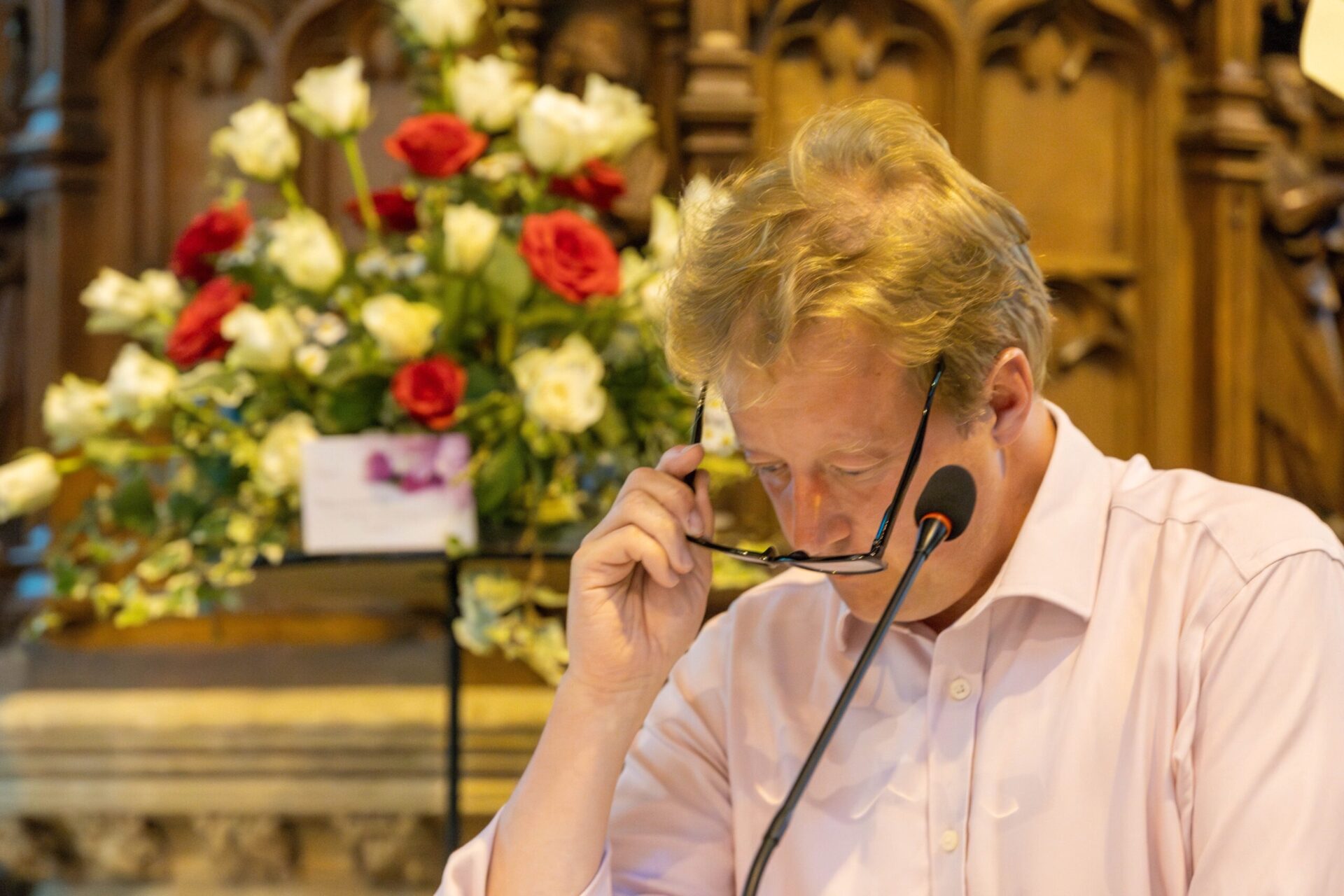Residents voicing concerns over the transformation of Broad Street, March, are focusing on a planning application yet to be approved to move the Grade II Listed Coronation fountain.
Dozens of objections have been registered with Fenland District Council but are unlikely to influence the formality of approval; the dye was cast was many years ago.
The council’s consultants ELG Planning set out the objective to “improve the siting and appreciation of this historic structure by relocating to a new position southwest on Broad Street”.
Millions have been sourced from the Government and the Cambridgeshire and Peterborough Combined Authority to complete the works – of which moving the fountain is key.
Fenland Council says the overall project “is the result of several years of consultation with the public as part of the Growing Fenland work and March Area Transport Study (MATS) as well as in response to the future needs of the town as it continues to grow”.
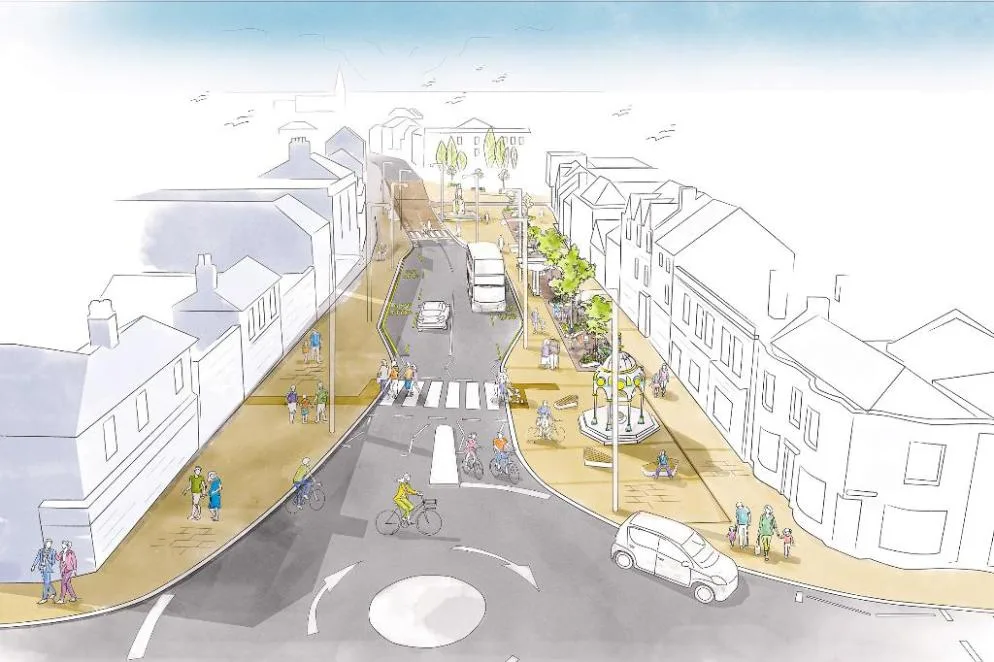
But that has not prevented a backlash – albeit at the 11th hour but still, technically, time for the planning decision to move the fountain to be rejected, however unlikely that might seem.
Logistically moving the fountain is challenging – and we will come to that shortly.
But firstly, a snapshot of some comments within the past few weeks of those wanting the fountain to stay where it is.
Matthew Barritt has told the council he feels the whole project to be “a waste of money and will increase traffic problems”.
Jennifer Lawler of March Society says: “We have been informed that the Broad Street project will go ahead and that the proposed layout of Broad Street which comes under the jurisdiction of Cambridgeshire Highways cannot now be changed.
“We understand that the 1912 Grade II listed Coronation Fountain Canopy must be moved in order to accommodate the roundabout which will replace the traffic lights.
“The reason given for the roundabout is increased flow of traffic and reduced pollution.
“However, there are concerns that with only two lanes of traffic there will be heavier traffic on those lanes, this being the only road through town, with delays caused by the use of the zebra crossings.”
She adds: “We are also concerned that with problems on the A141 heavier traffic will be sent through town.
“We object to the fountain being moved 15‐20 metres south‐west onto the pedestrianised area in front of Malletts.
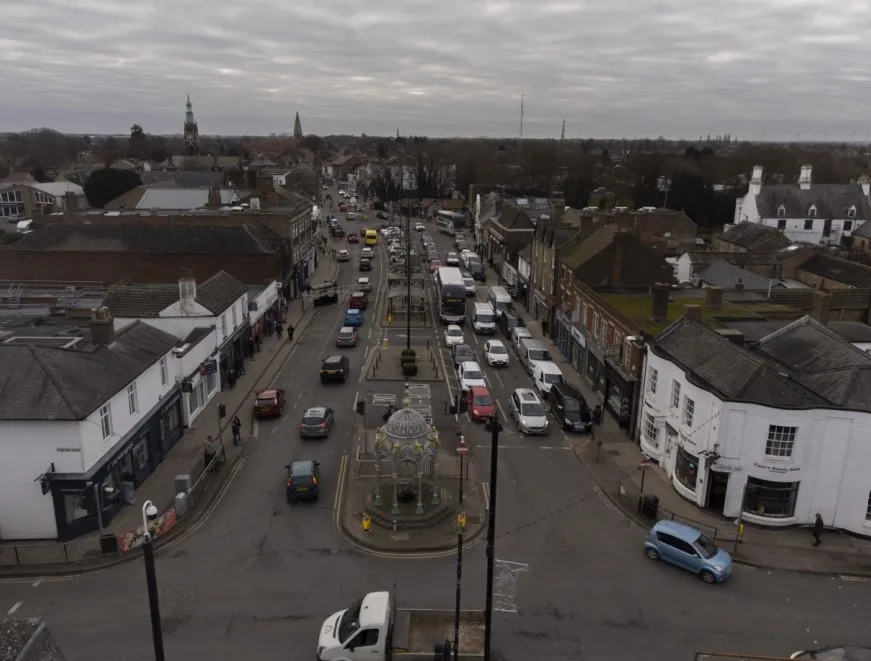
“The fountain is a prominent historic landmark of March in its present position at the head of Broad Street for the last 110 years.
“At the moment it is highly visible to everyone travelling along Dartford Road and Station Road, and Broad Street from the south.
“To maintain its status if it has to be moved, we would like it moved further south, further away from buildings and more centrally placed in the wider pedestrian area.”
She added: “We are concerned about the easy accessibility, and about vandalism and anti‐social behaviour which is less likely in its present position.”
Debbie Diablo “strongly objects to this development, it will kill off all the remaining businesses in town.
“It will cause chaos for all the takeaway deliveries. The area would not be able to be policed correctly.
“A huge area of hard service would cause drainage and surface water problems and result in localised flooding.
“It would be detrimental to the Saturday and Wednesday market.
“Town businesses will end up having to close which would result in a loss of rateable income for Fenland District Council.”
She also believes pubs in the town centre will lose income.
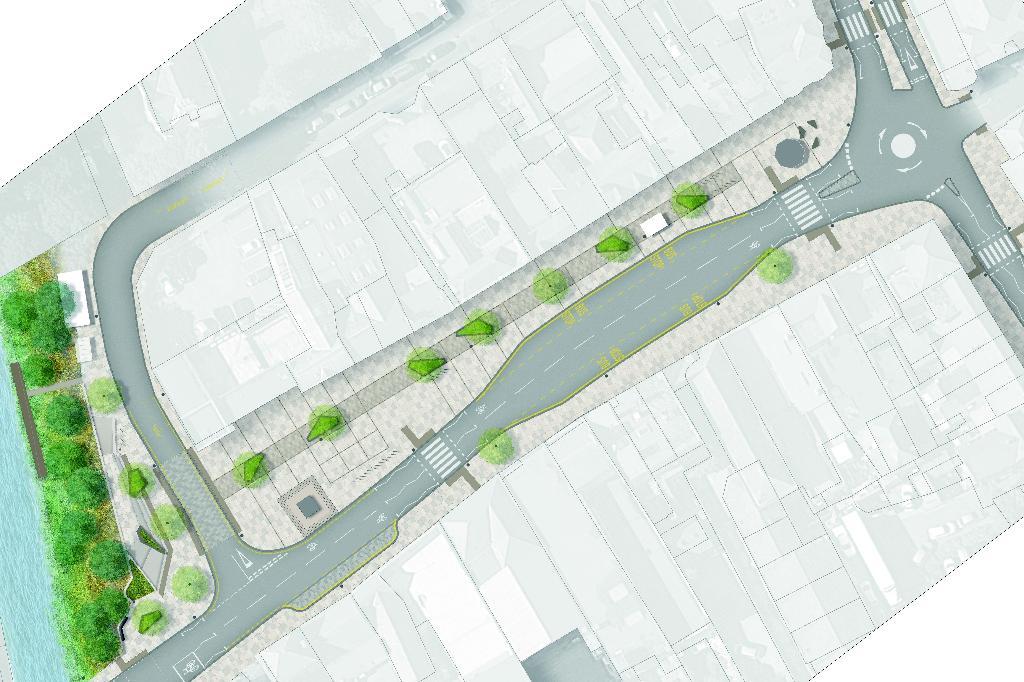
“When we have accidents on the A141 the town comes to a standstill this would be worse caused by this development,” she says.
“It is a complete and utter waste of money.
“I have outlined the negative comments for this development, I would appreciate Fenland District Council to demonstrate what benefits would be derived from this proposed development?”
John Lundrigan told planners: “Any alterations taking place must ensure that there is an alternative route across the river to get through March.
“The painfully felt gridlock in March on 15th December is a prime example.”
Mrs Katrina Lundrigan says: “Before any alterations are carried out on Broad Street, I would want to know that there is a plan for another river crossing in the town.
“I feel that unless there is an alternative route across the river is available then there will be utter gridlock as witnessed in March on Thursday 15th December because of a blockage in town.”
Bridget Hunter says: “This fountain has been part of March for as long as I have been alive.
“It is a vital asset in the character of the town and is part of its history. the introduction of a roundabout would not make traffic flow better. The traffic lights work fine as they are.
“We should not lose the history and character of our town.”
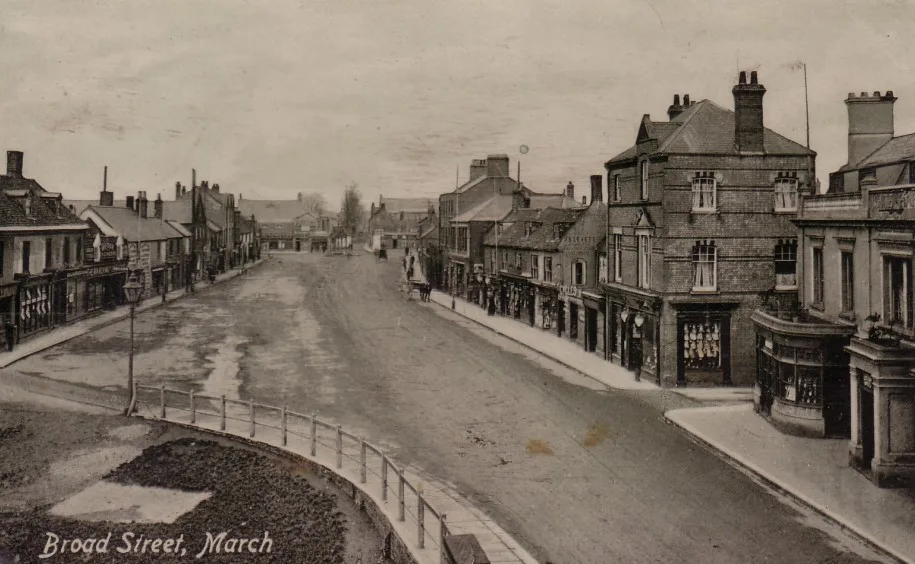
Caroline Beeken says: “March is a growing town and taking away a main road in March will make getting from one side to the other a real struggle.
“The bypass is not fit for the number of cars driving pass march or to get around. Traffic has been a major issue when midweek a road is closed; it took me an hour to get to one side to the other a couple of days ago.”
Lee Sustins also objects pointing out that “March has and always will be a hub for local people to come in from the town and surrounding areas to shop.
“Unfortunately, due to taxes and other issues the town is dying from a trade point of view.
“The selection of shops is now limited to beauty, hair & nails, and many charity shops. Classed as a market town, it was once a massive market, with stalls in the marketplace and through acre road etc.
“There is not the footfall anymore in town to warrant the area of Broad Street being pedestrianised.
“Doing this will create more issues to the town, lose passing trade to the limited shops from a quick stop buyer point of view, and the highway infrastructure would fail dramatically.
“As a police officer for the Fens, you can only see the carnage it causes when the A141 is shut, or an incident happens in town it brings the whole area to a standstill.
“Please please do not change Broad Street but think about turning the lights off at the junction of Broad Street and Dartford / Station road.”
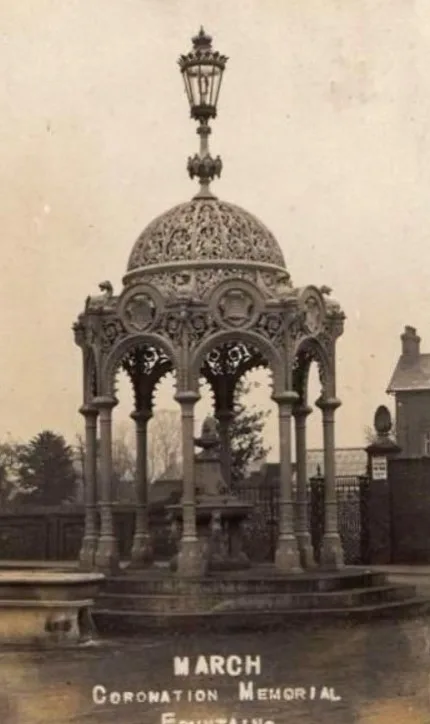
Darren Morgan believes the fountain “should be left in line with the memorial and have traffic either side”.
He adds: “I think March has lost enough of its wonderful history and I greatly believe moving the fountain impacts on the history of the town.
“It is unnecessary.
“Moving it is to make way for a roundabout will not improve traffic flow in the town due to the sheer volume of traffic already present.”
He added: “I will be very saddened if his project goes ahead as I’ve lived in the town for 50 years and think going ahead with this will mean less people will visit or town due to lack of parking availability.”
Historic England, however, says it has no objection to the application on heritage grounds.
Fenland Council has re stated its overall objectives.
Traffic signals removed at northern end of the road and replaced with a new mini roundabout
Northbound roadway removed with conversion to pedestrian space
Conversion of the southbound lanes to a north/south roadway
Historic water fountain relocated to a more accessible public space
Creation of several new zebra crossings throughout the street
The relocation of two double length bus stops
“The improvements will be complimented by a raft of public realm enhancements, including new paving, planters, trees and bike racks,” says the council.
ELG Planning says the proposed scheme of wider works look to demolish two existing structures at the southern end of Broad Street, the existing toilet building and bus shelter and redevelop to create an area of public realm.
“It is intended that the existing site of the shelter/toilet block may be subject to a future application for new public toilet provision,” says ELG.
“However, that does not form part of the current planning application with designs for new facilities still to be developed.
“The works subject to the current application encompass the relocation of the existing public fountain canopy structure which is a grade II listed building.”
ELG says there are both positive and negative impacts that would result from the relocation of the Coronation Fountain canopy, “although it is variously concluded that the benefits will outweigh the costs.
“The appraisal notes that although there have been some previous attempts at improving the appearance and character of Broad Street, that the parking spaces along the centre of the road has compromised some of the streetscape improvements.
“The parking spaces are identified as having a negative impact on the character of the street and the wider conservation area, effectively dividing what was designed as a wide open, accessible street”.
ELG says the evolution of the town in the 20th century has led to various changes along Broad Street “to the detriment of the experience of both pedestrian and vehicular users”.
It has changed the “understanding and setting of the heritage assets along the road that form part of the streetscape.
“The proposed public realm scheme for Broad Street aims to improve this experience and to encourage the return and retention of shops, businesses and pedestrian users to Broad Street”.
Morton Partnership is the structural engineer brought in by Fenland Council to advice on moving the fountain. Here is some of their observations about the challenge ahead.
They say March fountain canopy is a fine cast iron canopy constructed of numerous individual iron castings which are bolted together.
The canopy and drinking fountain were erected in 1912, assisted by the inhabitants of March, to provide drinking water and commemorate the coronation of his Majesty King George V.
It is understood that the drinking font, horse, and dog troughs were removed in the early 1970’s as they were deemed a traffic hazard. The canopy was listed a grade II English Heritage building on 22nd February 1985 – the canopy was restored in 2002.
The canopy and columns sit on a three-tier stone octagonal plinth; the lower tier is largely obscured by surrounding concrete. An, assumed later, electrical lighting scheme has been installed to the canopy.
“The installation and fixing system are somewhat dated and could be improved / updated,” says Morton.
“Suitable scaffold or other access equipment should be designed and approved to allow appropriate access to all parts of the structure.
“Many of the components weigh more than 100kg so appropriate lifting and moving equipment will be required.
“A spider mini crane of appropriate size may be suitable, but the contractor shall provide proposals for approval.
“The canopy shall be dismantled broadly speaking from the top down.
“Each component should be individually removed where possible to avoid the risk of fracturing fixing lugs etc.
“Each component should be individually tagged with 2 metal tags using a unique identifier. This should be recorded and cross referenced with digital images of the component, showing their location on the structure and a separate image of the removed item.
“A record of location, orientation, including details of any defects found and other salient information shall be compiled and updated as the structure is dismantled.
“Components shall be packed into appropriately purpose made plywood packing cases using appropriate softening and bracing to ensure that one component is not in contact with other component to avoid damage to the surface finish of the item
“The components are to be stored in an approved dry and secured unit.
“The location of the storage facility is not known at this time The contractor shall have appropriate insurances to cover the dismantling and transport to store in place to cover accidental loss or damage.
“The contractor may assume that insurance liability will pass to the local authority once the items are placed in store.”
Morton says each packing case shall be clearly marked up detailing the contents within each packing case.
“Dismantled components must be stored in a locked and secure facility prior to transport to the storage facility.
“It may be possible to transport components at the end of each working day, the location of the storage facility is not known at this time but, in any event, components cannot be left in an unsecure location.
“The stone steps and flagstones shall also be documented and packed into suitable packing cases as above. Each packing case should not weigh in excess of 1000kg.
“The electrical and assumed water services shall be isolated during the dismantling and left safe and secure at the end of dismantling works.”
Morton says there may be a significant period of time between dismantling and re-erection.
A prestart photographic survey will be undertaken to record damage, defects, and other salient features of both the canopy and surrounding areas.


